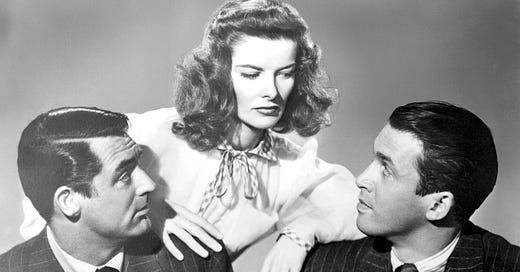For a long time, I held a prejudice against black-and-white films: I never chose to watch them, and always changed channels if I stumbled upon one on TV. I was in my late 20s when I gave them a chance and realised how stupid (like all prejudices) my aversion was.
This silly prejudice is far from idiosyncratic: I was discussing old films with colleagues, and most of them have never watched a black and white film (one’s definition of ‘old film’ was one made in the 90s). But it’s strange, because while the young generally have a tendency to sneer at art that predates them, this dislike is particularly intense when it comes to film: scores of theatre-goers still flock to The Mousetrap, bibliophiles read Jane Austen, and people listen to the Beatles (although sadly I have come across people who didn’t know the Rolling Stones).
Perhaps the reason is that people instinctively consider visual effects a core aspect of enjoying a film. I say instinctively because if you query them, most will agree that other aspects are far more important: cinematography (which includes composition, lighting, and colour), plot, character development, and dialogue. I’m not going to be an old fogy and claim old-schools films were better than modern cinema, but I will point to the Lindy effect and to selection bias and say that highly-rated and well-known classics are much more likely to be enjoyable than a randomly-picked modern film.
And though I cannot claim that old films are superior to modern films in a general sense, I think there are two aspects in which the best classics outshine contemporary ones: first, they have much snappier and memorable dialogue. Modern dialogue is far too expositional and dumbed-down; screenwriters seem to think the audience cannot work out anything for themselves, everything has to be spelled out. It’s not a coincidence that the most recent quote in AFI’s 100 Years, 100 Movie Quotes top 10 is from 1983.
Second, and this is more subjective, I feel that the stars of yesteryear had more charisma than their modern counterparts. Don’t get me wrong, there are many brilliant actors around, but I don’t think there are many who can match the on-screen presence and magnetism of Katherine Hepburn, Cary Grant, Humphrey Bogart, James Stewart, or Bette Davies. And also, I think the chemistry between actors in old films is much more palpable than that between most modern pairs.
(Actually, the absence of chemistry and collaboration is, I think, much more noticeable in American cinema and television, compared to British. This is true across the board, but it’s especially obvious on comedy and panel shows. Watch a British production, such as Would I lie to you, QI, or 8 out of 10 Cats and you’ll see comedians bouncing off each other, building on each other’s jokes, interacting; in contrast, American comedians just do their bits, one at a time, with little partnership. It’s not that the Americans are any less talented than their British colleagues; they just seem to be pursuing their art very individualistically.)
If any of this has convinced you to give the classics a go, you can start with one of my favourites, in no particular order:
His Girl Friday: a manipulative editor tries to get his star reporter to cover one last story before her wedding. It’s an adaptation of the play The Front Page, and a great example of snappy dialogue and on-screen chemistry (between Cary Grant and Rosalind Russell). It’s one of my favourite films, though the first half is much better than the second. The Front Page was remade in 1974 by Billy Wilder, with Walter Matthau and Jack Lemmon, and it’s also worth watching.
Casablanca: everyone knows this film, so I don’t need to say much, except that it’s much funnier and engaging than people often assume.
Out of the Past: my favourite film noir, about a man whose past catches up with him. It features the standard tropes of the genre — private investigators, a femme fatale, betrayals, and twists.
Philadelphia Story: a love story featuring some of the best actors of their generation — Cary Grant, James Stewart, and Katherine Hepburn.
All about Eve: the story of an aging actress threatened by her ambitious protege. Very moving, with an excellent performance by Bette Davies. Features Marilyn Monroe in an early (very secondary) role.
Sunset Boulevard: another story about an actress past her glory days, very dark and disturbing.
Whatever Happened to Baby Jane: even more dark and disturbing story about a woman holding her sister prisoner in their mansion.
Mr Smith Goes to Washington: one of the most uplifting films ever made, about a naive young man who finds himself a Senator, and sets to confront corruption in Washington. Worth watching, now more than ever.
12 Angry Men: I love films set in one location, and this is one of the most defining films in the genre. A sole juror votes to acquit a man accused of patricide, and tries to convince his fellow jurors to do the same.
Some Like it Hot: two musicians on the run from the mob disguise themselves as women to join a female band. Hijinks ensue.
Stagecoach: this is a Western, so don’t watch it if you’re not a fan of the genre; it is, however, excellent. Fun fact, the Lucky Luke album La Diligence is inspired by this film.
Dial M for Murder: a man attempts to murder his wealthy wife — very clever Hitchcock film.
I will also note that old-time slapstick comedies are excellent for children. I’ve been watching the likes of Laurel and Hardie or Buster Keaton with my kids, and they’re rolling on the floor with laughter; and laughter being contagious, these are great films to watch as a family. Many are available for free on Youtube.




You missed off Brief Encounter